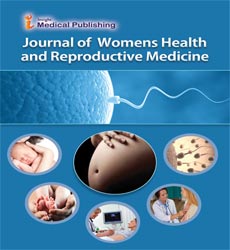Uterine Segmentation via Weakly Supervised Scribble Labeling
Gabriel Knight*
Women's Health Research Center, Stanford University, California, USA
- *Corresponding Author:
- Gabriel Knight
Women's Health Research Center, Stanford University, California,
USA,
E-mail: Gabriel@gmail.com
Received date: February 20, 2024, Manuscript No. IPWHRM-24-18746; Editor assigned date: February 23, 2024, PreQC No. IPWHRM-24-18746 (PQ); Reviewed date: March 08, 2024, QC No. IPWHRM-24-18746; Revised date: March 15, 2024, Manuscript No. IPWHRM-24-18746 (R); Published date: March 22, 2024, DOI: 10.36648/ipwhrm.8.1.83
Citation: Knight G (2024) Uterine Segmentation via Weakly Supervised Scribble Labeling. J Women’s Health Reprod Med Vol.8 No.1: 83.
Introduction
Endometrial cancer, a malignant tumor affecting the reproductive system, has shown a consistent increase in global incidence over the years. Beyond its high occurrence rate, endometrial cancer poses risks such as infertility, necessitating hysterectomy, and even posing life-threatening consequences. Consequently, its prevention and treatment hold significant clinical importance. Magnetic Resonance Imaging (MRI) offers precise imaging of soft tissues and multi-planar capabilities, making it a valuable tool for assessing pelvic structures. Utilizing MRI of the pelvic cavity facilitates understanding the internal anatomy of the uterus, evaluating the extent of malignant tumors, assessing myometrial invasion, and determining the stage of endometrial cancer. Accurate segmentation of the uterus is crucial for these evaluations. Treatment typically involves hysterectomy, bilateral salpingectomy, and oophorectomy, possibly augmented by pelvic and paraaortic lymph node dissections to address recurrence risks. Predictors of recurrence include age, tumor grade, lymphatic space infiltration, and International Federation of Obstetrics and Gynecology (FIGO) staging, which relies on tumor invasion depth and spread. Accurate uterine segmentation aids in thorough tumor removal during surgical treatment, minimizing residual lesions and enhancing surgical resection integrity, disease control, and reducing recurrence risks. Achieving an accuracy rate of over 85% is typically considered favorable in the segmentation of the uterus based on doctors' descriptions. Nevertheless, higher accuracy holds greater importance, particularly in evaluating and diagnosing Endometrial Cancer (EC). Manual segmentation of the uterus is both time-consuming and subjective, necessitating the need for automated segmentation. However, automating this process poses challenges. Firstly, the uterus is a dynamic organ, susceptible to changes in shape and size under various physiological conditions. Secondly, its anatomical complexity, encompassing the endometrium, myometrium, and adventitia, alongside neighboring structures like the fallopian tubes and ovaries, adds to the difficulty.
Segmentation of tissue
Additionally, the presence of cancerous tissue in EC patients may further distort the uterine shape, complicating accurate segmentation. Furthermore, the imbalance in the distribution of uterine and non-uterine regions within medical images can lead algorithms to overlook uterine details while focusing more on non-uterine areas. Existing methods for uterine segmentation have limitations, often relying on meticulous pixel-level annotations that demand substantial professional knowledge and labor. While some approaches incorporate a combination of annotated and unlabeled images for network training, the annotation process remains time-intensive. Due to the variability in uterine position and morphology, segmentation algorithms lack universal applicability. Nevertheless, the high contrast between the uterine body and surrounding tissues can enhance segmentation performance. Hence, when crafting algorithms, it's imperative to account for uterine characteristics and steer clear of futile training endeavors, a facet frequently disregarded in current methodologies. In light of MRI-based uterine traits, this research suggests a semi-supervised approach for segmenting uterine regions in MRI slices of patients with Endometrial Cancer (EC) using scribble annotations. Initially, the dual-branch network is comprised of two autonomous encoders and a shared decoder. These encoders extract richer features, lessening the network's reliance on extensive datasets.
Prerequisite placentation
Perturbations are introduced at varying depths within the encoders. Additionally, the pseudo-labeling technique is employed to address weak supervision signals derived from scribbles, fostering mutual supervision training. Furthermore, given the relatively consistent gradient distribution within the uterine region on MRI and significant gray intensity discrepancies of neighboring tissues, an exponential geodesic distance loss function is proposed to heighten the network's sensitivity to uterine boundaries. Considering the uterus's dynamic nature and pronounced morphological variations in MRI, input rotation disturbances are incorporated to bolster the network's resilience. The amalgamation of input rotation disturbances and encoder perturbations renders the proposed network more resilient to variations. Segmenting the uterus in MR images of endometrial cancer presents a valuable diagnostic avenue for gynecologists. However, employing deep learning for this purpose necessitates meticulous pixel-level annotation, which is both time-consuming and subjective. This method only necessitates scribble labels and is bolstered by pseudo-label technology, exponential geodesic distance loss, and an input disturbance strategy. Specifically, the method addresses supervision limitations by dynamically blending the outputs of a dual branch network to generate pseudo-labels, thereby expanding supervision information and facilitating mutual supervision training. Additionally, the introduction of exponential geodesic distance loss enhances the network's ability to delineate the uterus's edges, considering the significant grayscale intensity contrast between the uterus and surrounding tissues. Incorporating input disturbance strategies further refines the network's segmentation performance to accommodate the uterus's flexible and variable characteristics. The method's efficacy is validated on MRI images from 140 cases of endometrial cancer, demonstrating superior performance compared to four other weakly supervised segmentation methods.
Open Access Journals
- Aquaculture & Veterinary Science
- Chemistry & Chemical Sciences
- Clinical Sciences
- Engineering
- General Science
- Genetics & Molecular Biology
- Health Care & Nursing
- Immunology & Microbiology
- Materials Science
- Mathematics & Physics
- Medical Sciences
- Neurology & Psychiatry
- Oncology & Cancer Science
- Pharmaceutical Sciences
